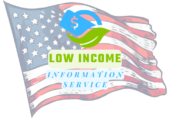Internet for Low Income Earners in Maryland
The digital divide continues to pose a significant challenge Internet for Low Income Earners in Maryland, as internet access becomes increasingly essential for various aspects of daily life. However, there are options available to help bridge this gap and provide affordable internet access to those in need. In this blog post, we will explore different avenues to tackle this issue, including government assistance programs and local initiatives. By highlighting these opportunities, we aim to empower low-income earners with the information they need to access reliable internet services without breaking the bank.
Affordable Internet Options For Low Income Earners
Living on a limited income can be challenging, especially when it comes to paying for essential services like the Internet. However, in today’s digital age, access to the Internet is crucial for staying connected, finding job opportunities, and accessing important resources. Fortunately, there are affordable internet options available specifically designed for low-income earners in Maryland.
One option for low-income earners in Maryland is the federal Lifeline program. Lifeline is a government assistance program that offers discounted phone and internet services to eligible individuals. Through Lifeline, low-income earners can receive a monthly discount on their internet bill, making it more affordable and accessible.
In addition to the Lifeline program, there are also affordable internet options provided by local internet service providers (ISPs). Many ISPs offer special plans and discounts for low-income households. For example, some ISPs may provide discounted rates for internet services or offer low-cost plans specifically tailored for individuals with limited income.
- Aside from the Lifeline program and ISP offerings, there are also local initiatives in Maryland aimed at bridging the digital divide for low-income earners. These initiatives may include community centers, libraries, or non-profit organizations that provide free or low-cost internet access to individuals in need. By leveraging these resources, low-income earners can access the internet without incurring significant costs.
| Program | Requirements | Discount Benefits |
|---|---|---|
| Lifeline | Low-income eligibility criteria | Monthly discount on internet bill |
| ISP Offerings | Low-income eligibility criteria | Discounted rates or low-cost plans |
| Local Initiatives | Varies based on program | Free or low-cost internet access |
Government Assistance Programs For Internet Access
In today’s digital age, internet access has become a necessity for individuals and families. It provides countless opportunities for learning, communication, and accessing important information. However, the cost of internet service can be a barrier for low-income earners in Maryland. Fortunately, there are government assistance programs available to help bridge this digital divide and provide affordable internet options. This blog post will explore some of these programs and how they can benefit low-income individuals and families in Maryland.
1. Lifeline Assistance
- The Lifeline Assistance program is a federal program that offers discounted phone and internet service to eligible low-income households.
- Through this program, eligible individuals can save up to $9.25 per month on their internet bill.
- In Maryland, various internet service providers participate in the Lifeline program, offering discounted rates and affordable internet plans for low-income earners.
2. Comcast Internet Essentials
- Comcast Internet Essentials is another government assistance program that aims to bridge the digital divide.
- Qualifying low-income households can access affordable internet service for $9.95 per month.
- This program also offers the option to purchase a low-cost computer and provides digital literacy training to help individuals fully utilize the internet.
3. Connect2Compete
- Connect2Compete is a program offered by EveryoneOn, a national non-profit organization.
- This program provides low-cost internet service and affordable computers to eligible low-income families.
- Through partnerships with various internet service providers, Connect2Compete offers internet plans starting at $9.95 per month.
4. State-Specific Programs
- In addition to federal programs, Maryland also offers state-specific programs to assist low-income earners in accessing affordable internet.
- For example, the Maryland Broadband Outreach Program focuses on expanding broadband access to underserved areas and offers grants to internet service providers to encourage the deployment of affordable internet options.
- By taking advantage of these state-specific programs, low-income earners in Maryland can find affordable internet solutions that meet their needs.
Conclusion
Access to the internet is crucial in today’s digital world, and low-income earners in Maryland should not be left behind. Government assistance programs such as Lifeline Assistance, Comcast Internet Essentials, Connect2Compete, and state-specific programs offer affordable internet options and bridge the digital divide. By utilizing these programs, individuals and families can stay connected, access important resources, and fully participate in the digital age.
Local Initiatives To Bridge The Digital Divide
Local Initiatives to Bridge the Digital Divide
In today’s digital age, access to the internet has become an absolute necessity. It is not just a means of communication, but also a source of information, education, and employment opportunities. However, for low-income earners in Maryland, affording internet services can be quite challenging. Thankfully, there are several local initiatives in place to bridge this digital divide and provide affordable internet options for those in need.
One such initiative is the Maryland Connect-a-Kid program, which aims to provide free or discounted internet services to low-income families with school-aged children. Through partnerships with local internet service providers, eligible families can access reliable internet at home for educational purposes. This program ensures that every child has equal access to online learning resources, enabling them to thrive academically.
Additionally, the Maryland Broadband Outreach and Infrastructure fund (BOIF) plays a crucial role in expanding broadband infrastructure across the state. This initiative focuses on underserved communities by investing in the development of high-speed internet networks in rural and low-income areas. By improving connectivity, BOIF helps bridge the digital divide and ensures that individuals from all backgrounds can enjoy the benefits of the digital world.
The **Internet for All** program is another notable local initiative in Maryland. This program collaborates with community organizations and local businesses to offer low-cost internet plans to low-income earners. Through affordable monthly subscriptions and discounted equipment, individuals can gain access to the internet without financial strain. The program also provides digital literacy training to help users navigate the online world confidently.
| Program | Objective |
|---|---|
| Maryland Connect-a-Kid | Provide free or discounted internet services to low-income families with school-aged children |
| Maryland Broadband Outreach and Infrastructure fund (BOIF) | Expand broadband infrastructure in underserved communities |
| Internet for All | Offer low-cost internet plans and digital literacy training to low-income earners |
These local initiatives demonstrate the commitment of Maryland’s government and community organizations to bridge the digital divide. By ensuring affordable internet options and expanding broadband infrastructure, they empower low-income earners to access the vast resources and opportunities available online. However, it is important to spread awareness about these programs so that eligible individuals can take advantage of them and improve their livelihood through internet access.
Frequently Asked Questions
1. What are some affordable internet options for low income earners?
Some affordable internet options for low income earners include discounted plans from internet service providers like Comcast’s Internet Essentials and AT&T’s Access program. There are also low-cost plans available from providers like Spectrum Internet Assist and Cox’s Connect2Compete.
2. What government assistance programs are available for internet access?
There are a few government assistance programs that provide support for internet access. One such program is Lifeline, which offers a discount on phone and internet services for low income households. Another program is ConnectHomeUSA, which aims to bridge the digital divide for families living in HUD-assisted housing.
3. Are there any local initiatives to bridge the digital divide?
Yes, many local communities have implemented initiatives to bridge the digital divide. These initiatives often involve partnerships between local government, non-profit organizations, and internet service providers. They may include providing free or low-cost internet access and distributing devices to low income individuals and families.
4. How can I find out if I am eligible for affordable internet options?
To find out if you are eligible for affordable internet options, you can visit the websites of internet service providers offering discounted plans. They usually have a section dedicated to eligibility requirements and application processes. You can also contact your local government or non-profit organizations that focus on digital inclusion for guidance.
5. Can I apply for multiple government assistance programs for internet access?
Yes, you can apply for multiple government assistance programs for internet access, as long as you meet the eligibility criteria for each program. It is worth researching and comparing the benefits and requirements of different programs to determine which ones are the best fit for your needs.
6. Are there any additional resources or benefits available for low income earners?
Yes, besides affordable internet options and government assistance programs, there may be additional resources and benefits available for low income earners. These can include discounted computer or tablet programs, digital literacy training, and access to public Wi-Fi hotspots. Local libraries and community centers often offer such resources.
7. How can I advocate for better internet access for low income earners in my community?
If you want to advocate for better internet access for low income earners in your community, you can start by reaching out to local government officials, non-profit organizations, and internet service providers. Share your concerns, experiences, and ideas for improvement. You can also join or support existing initiatives and organizations working towards digital inclusion.



